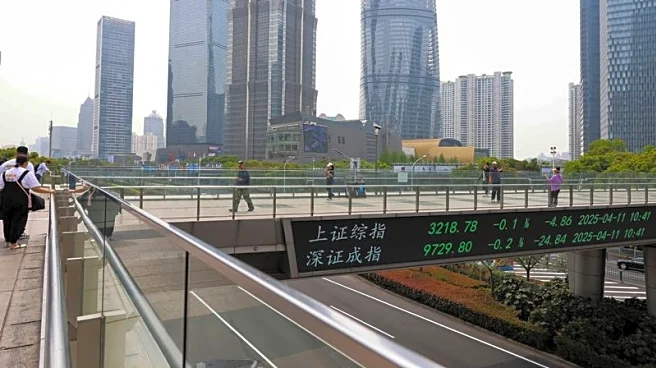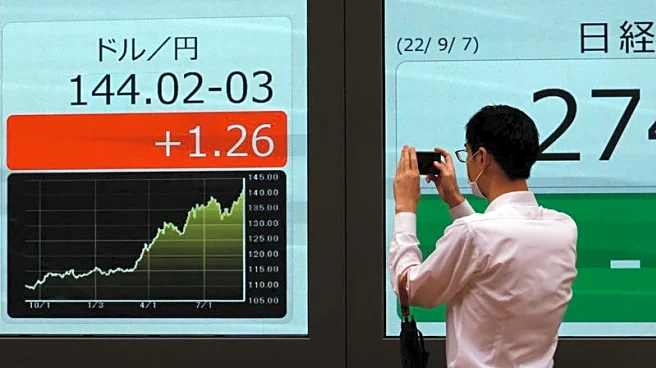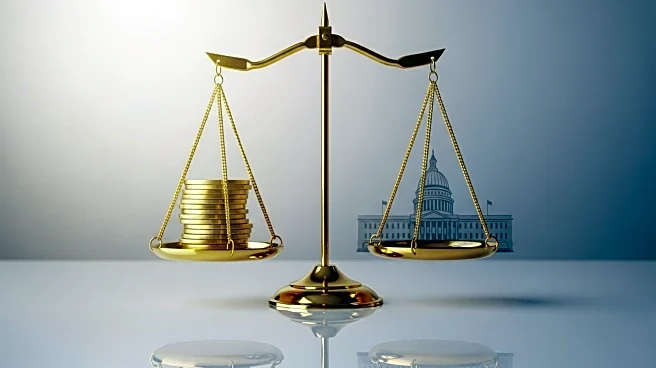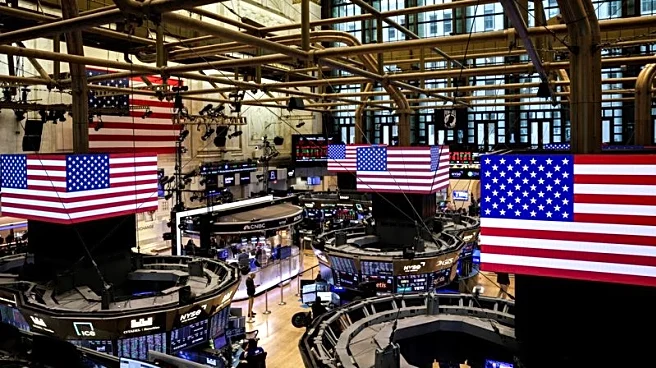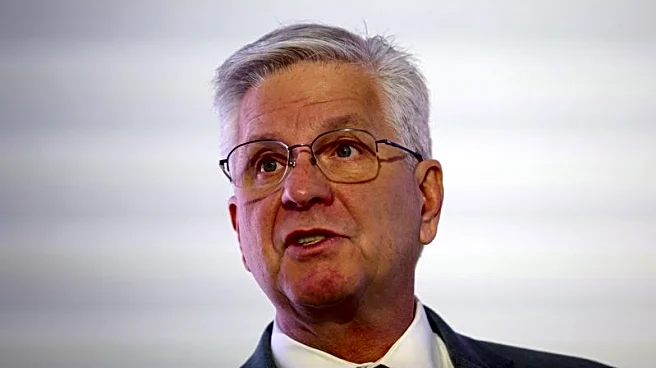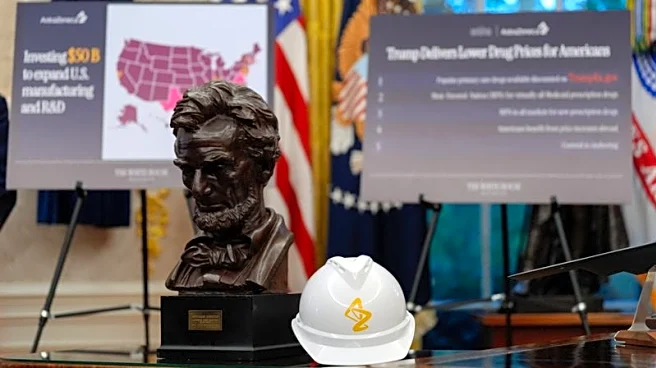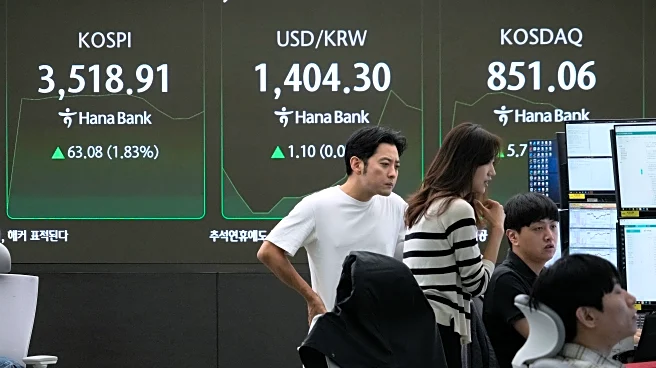What's Happening?
The U.S. Federal Reserve is expected to lower interest rates, but a new factor could alter this trajectory: President Trump's push for financial deregulation. This agenda aims to loosen banking regulations, potentially unlocking $2.6 trillion in lending capacity, according to research by Alvarez & Marsal. The deregulatory move could free up $140 billion in immediate capital for Wall Street lenders, significantly boosting U.S. banks' earnings. The initiative seeks to unwind parts of the Dodd-Frank Act, which imposed strict capital and liquidity rules on large banks post-2008 crisis. Critics argue these rules have constrained credit growth, pushing risk-taking into private lending markets.
Why It's Important?
The potential deregulation could have profound impacts on the U.S. economy, particularly in the banking sector. By reducing capital adequacy requirements, U.S. banks could see a substantial increase in earnings per share and return on equity. Major banks like J.P. Morgan Chase, Morgan Stanley, and Goldman Sachs stand to benefit significantly. However, European banks may experience slower growth under a deregulated U.S. system. The move could also influence the Federal Reserve's monetary policy decisions, as increased lending capacity might reduce the need for further interest rate cuts.
What's Next?
The timing of the deregulation push coincides with the start of Q3 earnings season for major U.S. banks. Market participants will closely monitor these earnings reports for indications of lending conditions and capital allocation. If banks signal that deregulation will enhance lending, the Federal Reserve may feel less pressure to cut rates. Conversely, if banks express caution, there may be increased pressure on policymakers to implement deeper rate cuts. The interplay between deregulation and monetary policy could redefine the balance of power between Washington and the Federal Reserve.
Beyond the Headlines
The deregulation initiative raises concerns about financial stability, echoing lessons from the 2008 financial crisis. Critics, including ECB President Christine Lagarde, warn against a regulatory rollback that could lead to an AI-driven asset bubble. The challenge lies in balancing growth ambitions with maintaining financial stability, especially as the U.S. invests in AI infrastructure and IoT projects.


